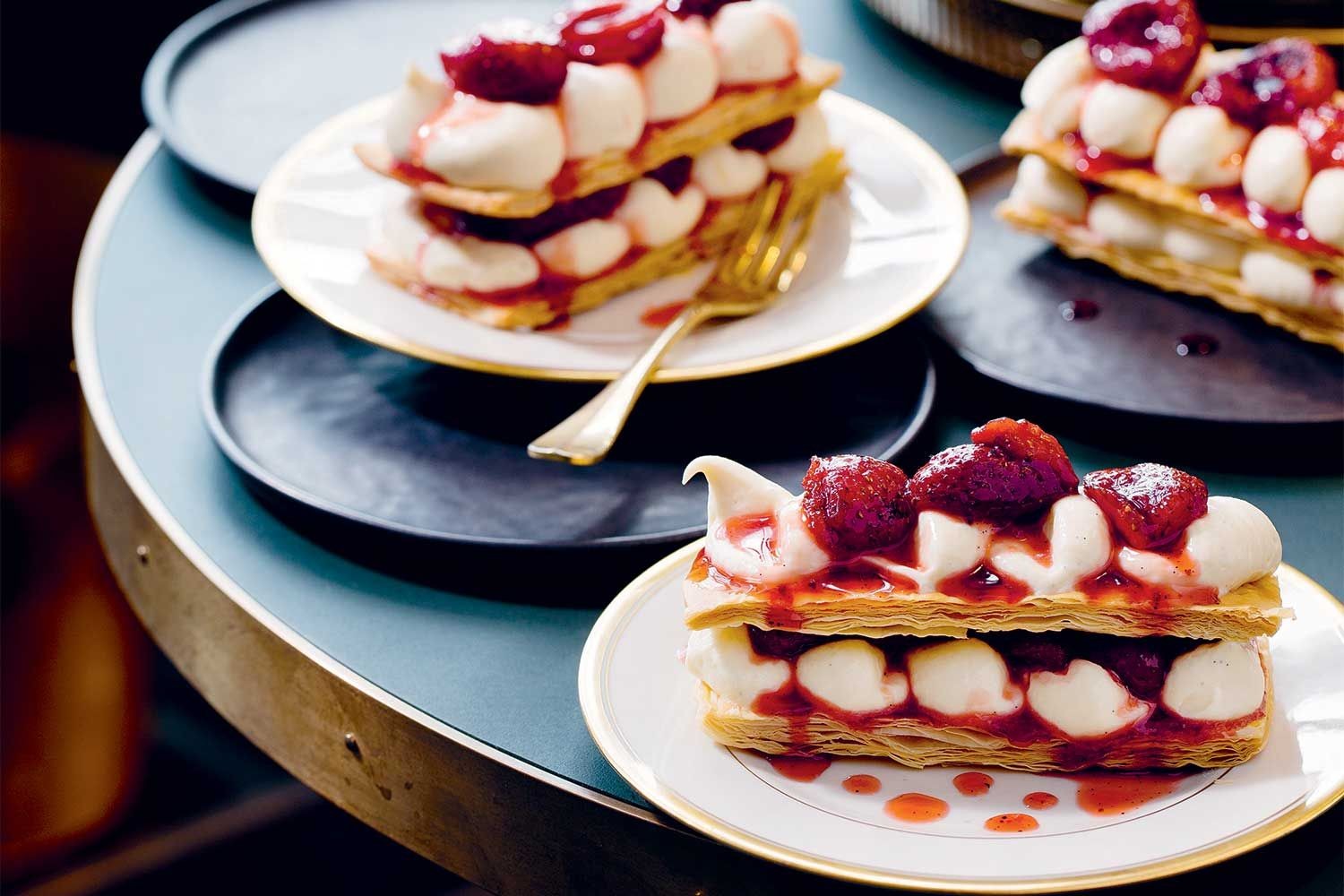French pastries are synonymous with elegance, flavor, and craftsmanship. From the buttery, flaky croissant to the delicate macaron, French pastry-making is often seen as an art form, mastered by professional pâtissiers. However, many of these beloved treats can be recreated at home with patience, practice, and a bit of knowledge. Here’s a guide to classic French pastries you can bake at home, along with tips to achieve professional results in your own kitchen.
1. Croissants
The quintessential French croissant is the perfect combination of light, airy layers and rich, buttery flavor. While making croissants from scratch may seem intimidating, the process becomes manageable with a little practice and attention to detail.
Croissant dough involves laminating butter between layers of dough through a series of folds, creating the signature flaky texture. To achieve the best results, it’s important to keep the butter cold and handle the dough gently to avoid melting the butter prematurely. Once baked, the croissants should have a crisp, golden-brown exterior and a soft, airy interior.
Tips for home bakers:
- Use high-quality, unsalted butter for the best flavor.
- Ensure your kitchen is cool while working with the dough to prevent the butter from softening too much.
2. Madeleines
Madeleines are small, shell-shaped sponge cakes with a soft, airy texture. Often enjoyed with tea or coffee, they are a favorite among French pastry lovers for their simplicity and charm. Though they are light and delicate, they have a buttery, rich flavor that makes them irresistible.
Madeleines are easy to make at home with a few key ingredients like eggs, sugar, flour, butter, and vanilla. The signature hump on the back of each madeleine comes from properly chilling the batter before baking, which helps create the distinct shape.
Tips for home bakers:
- Chill the batter for at least an hour before baking to ensure a pronounced hump.
- Butter the madeleine pan thoroughly and dust it with flour to prevent sticking.
3. Éclairs
The éclair is one of the most popular and recognizable French pastries, known for its elongated shape and decadent fillings. Traditionally filled with vanilla pastry cream and topped with a chocolate glaze, éclairs are made from pâte à choux dough, the same dough used for cream puffs and profiteroles.
Making éclairs at home involves piping the choux dough into long, thin shapes and baking them until they are puffed and golden. Once baked, the éclairs are hollow inside, making them perfect for filling with flavored creams or custards. You can experiment with fillings like chocolate, coffee, or fruit-flavored pastry cream to create your own versions.
Tips for home bakers:
- Pipe the choux dough evenly to ensure éclairs bake uniformly.
- Avoid opening the oven door during baking to prevent the éclairs from collapsing.
4. Tarte Tatin
Tarte Tatin is a classic French upside-down caramelized apple tart that offers a combination of rich caramel, tender apples, and flaky pastry. It was said to be created by accident by the Tatin sisters in the 19th century, but it has since become a beloved dessert around the world.
This rustic pastry is made by caramelizing apples in butter and sugar, then covering them with a sheet of puff pastry and baking until golden. Once baked, the tart is flipped upside down, revealing the beautifully caramelized apples on top.
Tips for home bakers:
- Use firm apples like Granny Smith or Honeycrisp to hold their shape during baking.
- Be patient when caramelizing the apples, ensuring the sugar turns a deep amber color for maximum flavor.
5. Macarons
The delicate and colorful macaron has become one of the most iconic French pastries, known for its crispy exterior, chewy interior, and endless variety of flavors. While macarons are notoriously tricky to make, with practice and precision, they can be mastered at home.
Macarons are made with almond flour, egg whites, and sugar, and they require careful folding and piping to achieve the perfect texture. After baking, the shells are sandwiched with fillings such as buttercream, ganache, or fruit preserves.
Tips for home bakers:
- Let the piped macaron shells rest at room temperature for 30 minutes to an hour before baking. This allows a “skin” to form, which creates the signature smooth top and foot of the macaron.
- Use a kitchen scale to measure ingredients precisely for consistent results.
6. Palmiers
Palmiers, also known as “elephant ears,” are crispy, caramelized puff pastry cookies shaped like hearts. They are incredibly simple to make but deliver a deliciously buttery, sweet crunch that’s perfect for a snack or dessert.
Palmiers are made by rolling out puff pastry, sprinkling it generously with sugar, and folding it into the characteristic palm shape before slicing and baking. As they bake, the sugar caramelizes, creating a golden, crispy treat.
Tips for home bakers:
- Use store-bought puff pastry for ease, or make your own if you’re feeling ambitious.
- Be sure to coat the dough generously with sugar for maximum caramelization.
7. Canelés
Originating from Bordeaux, canelés are small pastries with a rich, custardy interior and a dark, caramelized crust. These distinctive pastries are flavored with vanilla and rum, giving them a subtle sweetness and a delightful aroma.
Canelés are made with a simple batter of flour, eggs, sugar, and milk, but the key to their unique texture lies in the special copper molds traditionally used to bake them. These molds help create the crispy exterior while keeping the inside soft and creamy.
Tips for home bakers:
- If you don’t have copper molds, silicone molds work as well, though the crust may not caramelize as deeply.
- Rest the batter overnight in the fridge to develop the flavors and improve texture.
French pastries may seem intimidating, but with the right tools, ingredients, and techniques, you can bring the magic of a Parisian pâtisserie to your home kitchen. These classic pastries not only offer delicious results but also provide a rewarding baking experience as you master the art of French baking.

